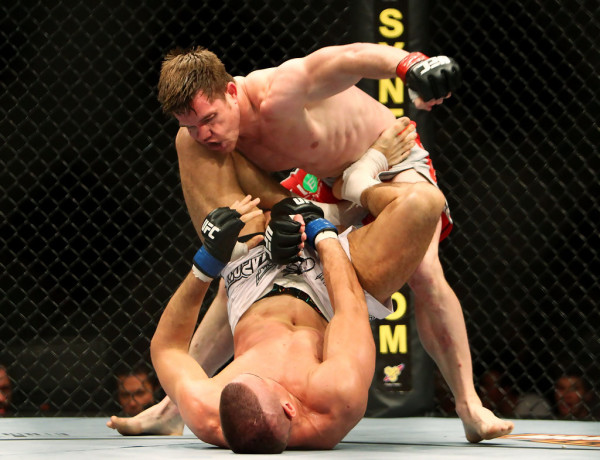We need to go to the mat vs. ultimate fighting
Published January 7, 2016 by The Villager
After years of spending substantial time and money lobbying to overturn a state ban on caged fighting, Ultimate Fighting Championship expects that Albany’s upcoming legislative session will bring them success. But to ensure their efforts, they filed suit against New York State to overturn the ban on ultimate fighting. Part of their message in Albany has been to rebrand caged fighting to Mixed Martial Arts, which sounds much more mainstream.
The notion that MMA is a sport is difficult for me, and many others, to accept. I am a big sports fan who follows several sports, including professional football. Of course people who play sports can get injured and we are learning more every day about the long-term health implications of even minor concussions. But the goal of these sports — whether it is scoring points by hitting a ball with a bat, throwing a ball through a hoop, or shooting a puck into a net — is not to punish one’s opponent but to win the match. But “winning” in “Mixed Martial Arts” is predicated on physically beating up one’s opponent. On that basis alone, I believe that New York State should not repeal its ban on this activity.
The attempt to sanitize MMA is betrayed by the facts. According to a recent study in the March 21, 2014, issue of the American Journal of Sports Medicine, about one-third of professional MMA matches end in a knockout or a technical knockout. A technical knockout occurs when a fight is stopped by a referee who determines that a fighter is no longer able to defend him- or herself. This study indicates that there is a higher incidence of brain trauma in MMA than in boxing or other martial arts.
MMA is caged fighting, a no-holds-barred fight using punches and kicks, as well as wrestling holds and moves from judo, boxing and kickboxing, with the fighters wearing fingerless gloves and no head protection. The cage itself adds to the reality that this is a more violent iteration of the familiar boxing match held in a ring. In a fight that goes to a knockout, repeated blows to the head are common. In other contact sports, such as football and ice hockey, which are referenced by proponents of MMA to demonstrate that all sports are dangerous, significant protective gear is utilized, and even this protection doesn’t prevent frequent severe injuries.
In response to increased understanding of the dangers of repeated concussions, the NFL has instituted a “concussion protocol” to monitor head injuries. If there is any question, an independent doctor on the sidelines can remove a player from the game. But in these other sports, we see teams engaged in the effort to score points. In MMA, the combat is one-on-one, with the only goal being to disable an opponent.
Aside from the potential long-term physical damage to young fighters, legalizing this type of fighting as a sport is a negative, even destructive message to young people. As larger questions are being asked regarding contact sports like football, some high schools have suspended their programs, and many programs are actively working on new techniques to reduce potential injuries, such as changes in tackling tactics. What is the rationale for New York to legalize a new and more violent “sport”?
Proponents of MMA claim that New York State is missing out economically because of the ban, which prevents matches from being hosted by local venues. But we don’t know if the long-term healthcare costs to New York will outweigh the benefit to New York venues. There is no question that it will greatly enrich UFC, but is that the reason to eliminate the ban?
New Yorkers need to ask whether this “sport” is so important to New York’s future that we will change the law and risk fighters’ exposure to greater long-term healthcare and long-term disability costs. The recent NFL settlement is roughly $1 billion, to be paid out over the next several decades to players who suffer from specific debilitating conditions that are recognized to be a result of their playing football.
Is UFC, a much newer entity, going to be in a position to provide the same level of compensation? Or will New York find itself providing for fighters who face long-term care needs that they and their families cannot afford?
New Yorkers need to ask their representatives how they stand on this issue and whether their state legislators support eliminating the ban on cage fighting and why.

